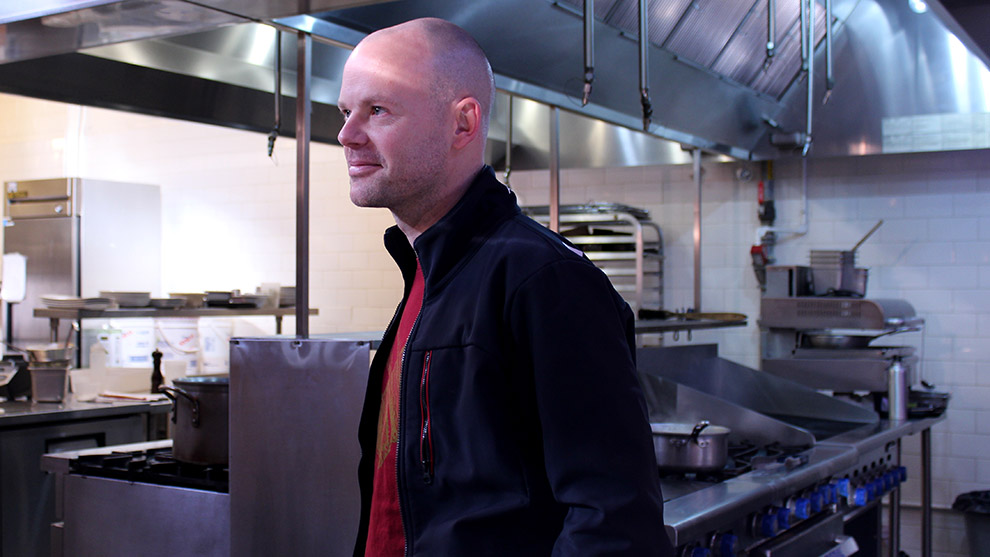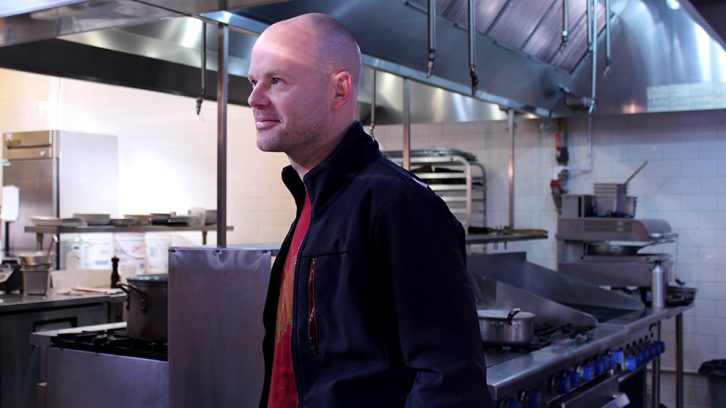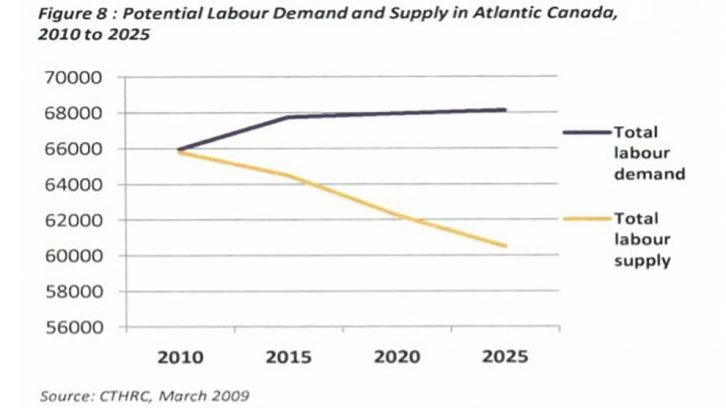Restaurants
Nova Scotia restaurant kitchens still reeling from lack of workers
Influx of 'trendy' new restaurants adds to job shortage in industry

caption
Ludovic Eveno surveys the kitchen at the Agricola Street Brasserie.
caption
Ludovic Eveno surveys the kitchen at the Agricola Street Brasserie.It’s been three years since Ludovic Eveno opened his north-end Halifax restaurant, the Agricola Street Brasserie. While he doesn’t work in the kitchen anymore, Eveno knows how hard it is to cook for hundreds of people a night.
“It’s not always fun,” he says. “(The kitchen) can be a very stressful environment depending on where you work.”
That’s why Eveno does all he can to keep his employees happy, offering everyone from his executive chef to dishwashers competitive wages along with medical and dental benefits.
“If your staff is not happy, you cannot provide good service or a good experience,” he says.
The employee culture Eveno has created at his restaurant means the staff turnover has remained relatively low since opening. Although, he knows he’s not immune to having his staff poached by other establishments.
He says most Nova Scotian kitchens need all the help they can get and most are willing to offer higher pay to secure the most qualified candidates.
Industry trends
Gordon Stewart, executive director of the Restaurant Association of Nova Scotia, says the food and beverage industry in the province employs about 26,300 people in a wide range of positions — from chefs who require formal education and training, to front of house positions that require minimal training.
“There just simply isn’t enough people to get back in our sector what we need,” Stewart says.
Stewart says the lack of kitchen employees, which includes anyone from a executive chef to a line cook, is the single largest problem the province’s food and beverage industry will face. According to data from the association, nine years from now, the provincial food and beverage services labour shortage is estimated to be as high as 6,780 full-time and seasonal jobs.
It’s part of a larger trend of worker shortages in the the region. As of 2015, Atlantic Canada was already estimated to be short 4,000 skilled workers, according to documents provided by the Restaurant Association.

caption
The shortage of qualified kitchen workers is part of a larger trend in Atlantic Canada.This is because restaurants are having trouble attracting people to the field. In some cases, Stewart says those working in front-of-house positions, such as servers and hosts, can make more on any given night than those working in kitchens.
Andrew Stevens, hospitality academic chair at Nova Scotia Community College (NSCC), says culinary arts students are required to complete a co-op placement between their first and second year of study. The purpose is to give students an idea of what a culinary career looks like.
“There’s not a shortage of jobs available for our graduates,” Stevens says, adding that not all students are taking them.
Gordon Stewart says part of the issue stems from a competitive food and beverage world market and culinary education programs where “real” kitchen environments are not being accurately replicated. He estimates that out of 100 culinary students, only about 15 to 18 of the province’s graduates will end up working in the field.
“The kitchen is a very fast-paced environment; it’s very tight,” says Stewart. “When you’re working in a college kitchen you’re working in a big room with a big stainless steel kitchen with lots of arm space, but that’s not what it’s always like.”
He adds that there is also a shortage of Red Seal certified chefs. The Red Seal is a Canadian program that allows for onsite training for chefs through apprenticeship. Due to the shortage, it is becoming more difficult for Nova Scotia to retain a pool of trained professionals.
Stewart says the federal temporary foreign worker program has provided a major avenue for employers to resolve their labour needs, but only for a short time.
‘Very competitive’ restaurant scene
Benefit packages and workplace environments also plays a large role in influencing where kitchen workers decide to apply — and whether they choose to stay at one establishment for the long term.
Tanya King calls the competition between restaurants for qualified employees “very competitive.” She’s the manager of daMaurizio, a fine dining restaurant in downtown Halifax.
“People are throwing around ridiculous amounts of money just to get people through the door,” King says.
She is one of the lucky ones as her restaurant was named 89th best in Canada in 2015. The staff at her restaurant have remained relatively consistent throughout her time as manager. She attributes it to the restaurant’s stable position in the otherwise uncertain and changing Nova Scotian food market.
“For us, we do what we do, (and) we do it well,” King says.
She’s seen her fellow restaurateurs shed tears over the lack of experienced kitchen workers in the province.
King partially attributes the shortage to the stagnant population of Halifax combined with the recent rash of “trendy” restaurants opening up in neighbourhoods like the city’s north end. She’s concerned there’s not enough people to support these new restaurants and keep them afloat.
“The market is saturated,” she says. “There’s not enough to go around.”
A tipping point
Lia Rinaldo, managing director of Devour!, Canada’s largest food and film festival hosted in Nova Scotia, has seen major changes in Halifax’s food scene in the past few years.
She says there is a trend towards casual and locally produced food, but at a higher price so that it feels like fine dining.
“People are caring a little more about where their food comes from, they want to know the stories behind the food,” she says. “People have become more in tune to that type of thing over the last five years.”
But Rinaldo says there will be a tipping point.
“Right now it still seems to be the growth period because there’s still restaurants that are in the works of opening, but we’re definitely going to hit that shortage point especially in labour and people,” she says.
According to the Restaurant Association of Nova Scotia, the province experienced its highest number of restaurant closures in 2011. That year, 45 new restaurants opened, but 38 closed down.
Rinaldo says these restaurants have to work hard to be sustainable.
“All of these perceived trendy restaurants have to work hard to create a good work culture for their employees so they’re excited to work,” she says. “It’s not about being trendy and serving local food; it’s about creating a culture that’s going to stick and be sustainable for the long term.”

